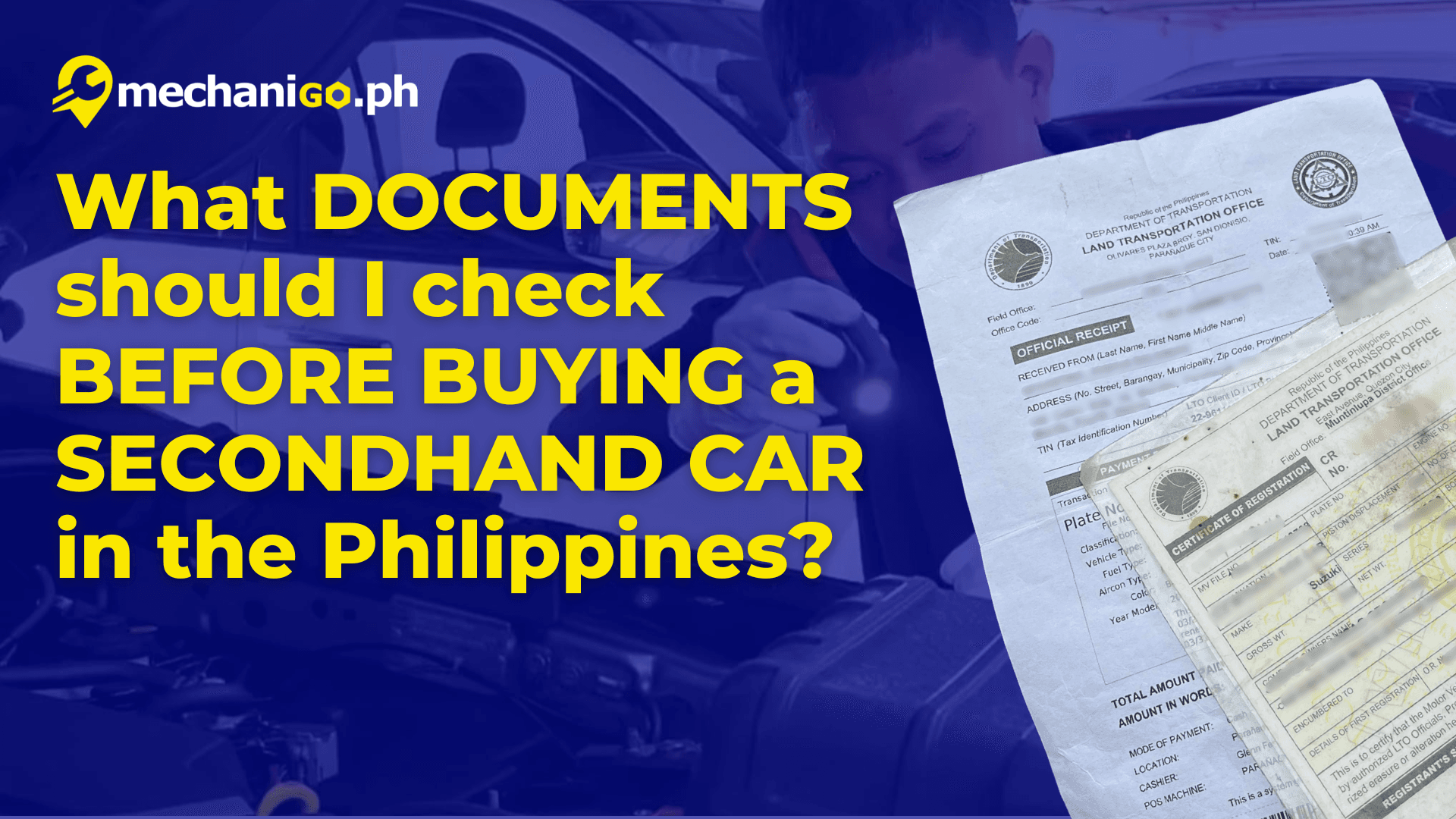
October, 2025 • Mechanigo.ph
What Documents Should I Check Before Buying a Secondhand Car in the Philippines?
Buying a car—whether brand-new or secondhand—is one of the biggest financial decisions most Filipinos will ever make. For many, a secondhand car is the practical choice because it’s more affordable, often comes with useful upgrades, and is readily available.
But here’s the catch: buying a used car without the right documents can lead to serious problems. From legal disputes to unexpected costs, missing paperwork can turn your dream car into a nightmare.
To help you avoid these pitfalls, here’s a complete checklist of documents you need to check before buying a secondhand car in the Philippines—plus a few extra tips that every car owner should know.
Why Car Documents Matter When Buying a Used Vehicle
A car is more than just a machine—it’s a legal asset. Without the correct paperwork, you may not be recognized as the true owner. Worse, you could unknowingly buy a stolen or encumbered vehicle.
These documents protect your rights as a buyer, ensure a smooth transfer of ownership, and confirm that the car is roadworthy.
Must-Have Documents When Buying a Secondhand Car
1. Official Receipt (OR) and Certificate of Registration (CR)
Issued by the Land Transportation Office (LTO), the OR and CR prove that the vehicle is properly registered. Double-check that the plate number, engine number, and chassis number match the actual car.
🚩 Red Flag: If the seller cannot provide these, walk away immediately.
2. Notarized Deed of Sale
This is the legal proof of transfer of ownership. It must be notarized to be valid and enforceable.
💡 Tip: Never rely on a handshake deal. A notarized Deed of Sale protects both the buyer and the seller.
3. Valid ID of the Seller
Verifies the identity of the person you’re transacting with. The name on the ID should match the OR, CR, and Deed of Sale.
4. LTO or HPG Clearance
Confirms that the car is not stolen or involved in any legal dispute. This ensures that the vehicle is “clean” and safe to buy.
5. Emission Test and Motor Vehicle Inspection Report (MVIR)
Required for registration renewal, these also confirm that the vehicle is roadworthy.
6. Maintenance Records
Show how well the car has been maintained over the years. Regular Preventive Maintenance Service (PMS) is a good sign that the car is in excellent condition.
7. Warranty Documents (if available)
For newer secondhand vehicles, the remaining dealer or manufacturer warranty may still apply—giving you added protection and savings.
Red Flags and Common Mistakes to Avoid
Even with complete documents, be cautious of these warning signs:
- The seller is rushing you to close the deal.
- Engine and chassis numbers don’t match the papers.
- Price is way too low compared to market value (possible stolen unit).
Pro Tip: Don’t Skip a Professional Car Inspection
Even if the documents are complete, the vehicle’s actual condition matters just as much. A professional inspection can uncover hidden problems that paperwork alone cannot show.
Services like MechaniGo.ph Secondhand Car Buying Inspection give you peace of mind. Our certified mechanics thoroughly check the engine, under chassis, interior, and exterior—so you know exactly what you’re buying.
👉 Buying a secondhand car in the Philippines? Protect yourself by checking these documents first—and consider getting a professional inspection to avoid costly mistakes.
Ready to buy a secondhand car? Book your Secondhand Car Buying Inspection with MechaniGo.ph